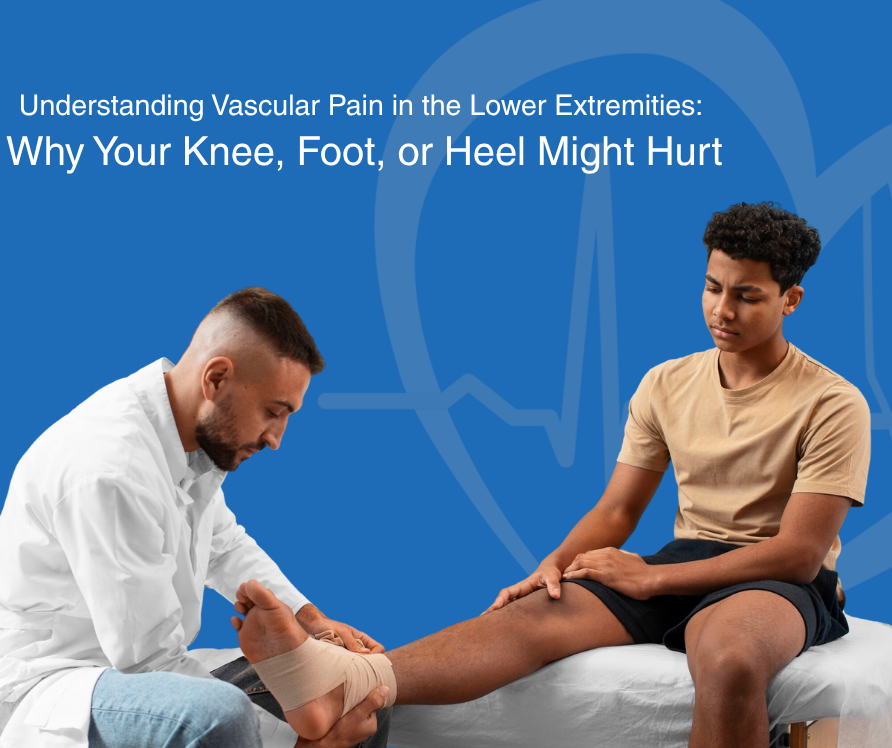
If you’ve ever felt aching, burning, or cramping pain in your legs—especially in the knee, foot, or heel—you’re not alone. While many people assume this discomfort is due to joint or nerve problems, it’s often related to poor circulation or vascular disease. Understanding the vascular causes of lower-extremity pain can help you get the right diagnosis and effective treatment before symptoms worsen.
Vascular pain occurs when blood flow through your arteries or veins is restricted, depriving your muscles and tissues of oxygen. This can lead to pain, fatigue, heaviness, or swelling, especially after walking or standing for long periods.
The most common vascular conditions that cause leg pain include:
Knee Pain and Circulation Problems
Pain around the knee isn’t always from arthritis. PAD can reduce blood flow to the thigh and calf muscles, causing pain that radiates toward the knee. Patients may describe it as tightness, burning, or weakness when walking. If rest helps and activity makes it worse, poor circulation may be to blame.
Many people with foot or heel pain assume it’s plantar fasciitis or neuropathy—but in some cases, it’s a vascular issue. Poor arterial circulation can cause rest pain—a burning or throbbing sensation in the toes, foot, or heel that worsens when you elevate your legs. Venous disease may cause swelling, skin discoloration, or ulcers around the ankle and heel.
If you notice cold feet, shiny skin, slow-healing wounds, or numbness, these may be warning signs that your circulation needs evaluation.
You should schedule a vascular evaluation if you experience:
At Heart Vascular and Leg Center, we perform non-invasive vascular ultrasounds to identify blockages or vein problems and offer minimally invasive treatments that restore healthy blood flow—often with no hospital stay and minimal recovery time.
Don’t ignore leg, knee, or foot pain—especially if it’s new, persistent, or affecting your daily life. Early diagnosis of vascular problems can prevent serious complications, including ulcers, infection, or even limb loss.
If you’re experiencing these symptoms, contact Heart Vascular and Leg Center today to schedule a vascular evaluation. Relief—and better circulation—may be closer than you think.
© Copyright 2024 Vascular Health Partners LLC. All Rights Reserved
Designed By CyberWorx